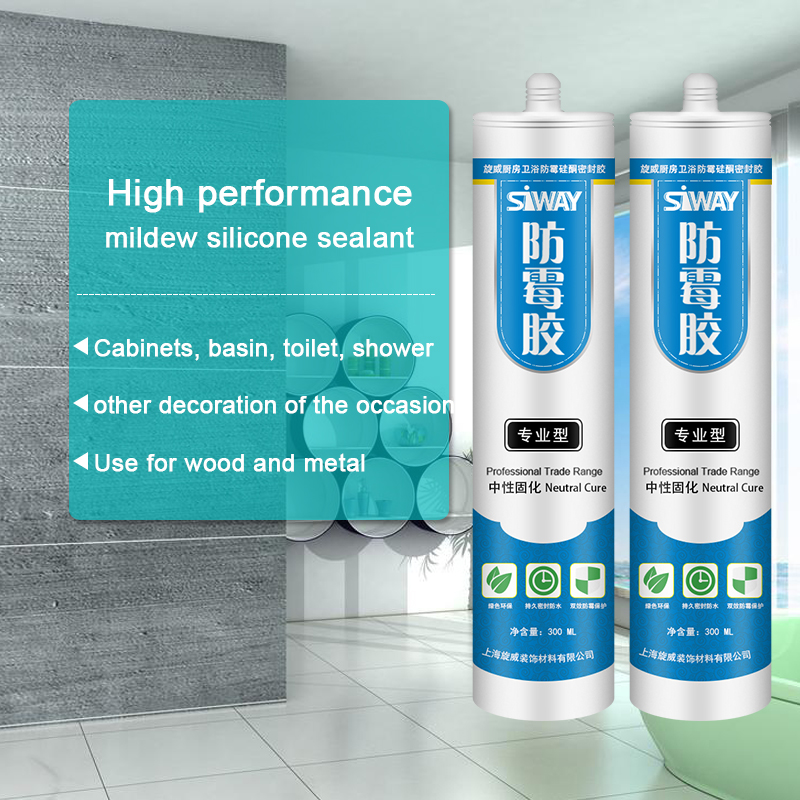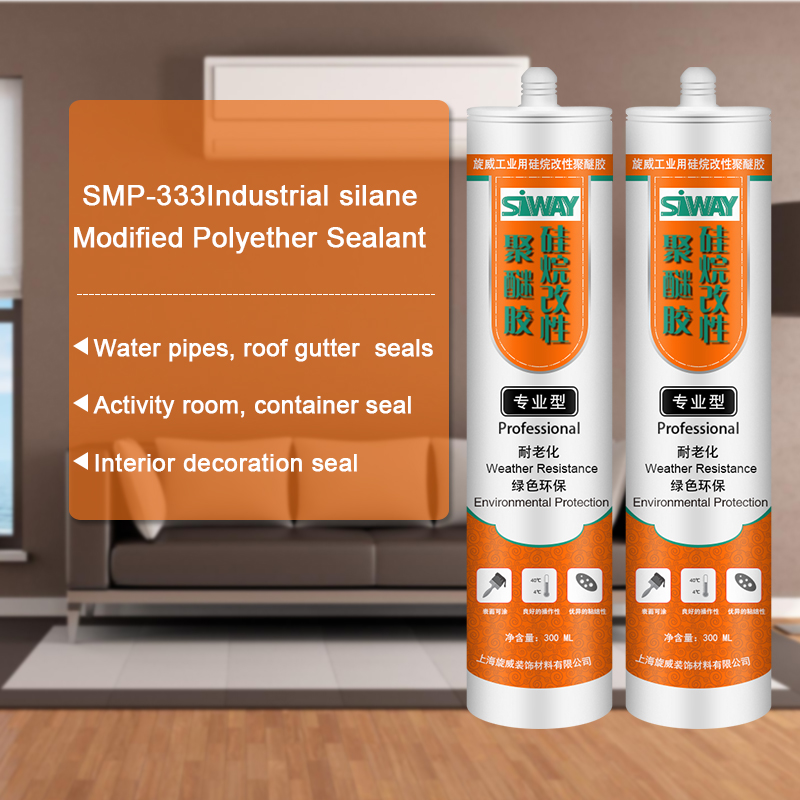Bottom price for Siway SV-602 Epoxy Structural Adhesive A/B to Korea Manufacturer
Short Description:
Description SV-602 is a 2-part structural epoxy adhesive developed for such application as dry fixing cladding. It has strong adhesion to metals, woods, reinforced plastics stone, ceramic and masonry. It is the best choice for bonding parts which must withstand weather, moisture and temperature fluctuations. SV-602 will adhere with minimum surface preparation and has a low coefficient of expansion. Key Features 1. Room temperature curing Epoxy adhesive 2. Fast cure at room temperature,...
We are also focusing on improving the stuff management and QC system so that we could keep great advantage in the fiercely-competitive business for Bottom price for Siway SV-602 Epoxy Structural Adhesive A/B to Korea Manufacturer, Sincerely hope we are growing up together with our customers all over the world.
Description
SV-602 is a 2-part structural epoxy adhesive developed for such application as dry fixing cladding. It has strong adhesion to metals, woods, reinforced plastics stone, ceramic and masonry. It is the best choice for bonding parts which must withstand weather, moisture and temperature fluctuations. SV-602 will adhere with minimum surface preparation and has a low coefficient of expansion.
Key Features
1. Room temperature curing Epoxy adhesive
2. Fast cure at room temperature, <40 min for reaching a tack-free status under standard environment (STD: 23℃, 50% humidity)
3. Mix ratio of 1:1 by volume or by weight
4. Good mechanical property
5. Bonds a wide variety of building materials
6. Good waterproofing and chemical resistance
Basic Application
1, the external walls of stone material, ceramic and other hang bond;
2, concrete, ceramics, stone, wood and other prefabricated split, bonding and jointing;
3, concrete, stone and so on crack repair;
4, the structure of the localization, anchor, reinforcement and reinforcement.
Technical data sheet
The following data is for reference only and is not recommended for the specification
| Shear strength | Stainless steel-stainless steel/Standard conditions | ≥18 | JC887-2001 | ||
| Pressure shear strength | Stone-stone/ Standard conditions | ≥12 | |||
| Stone-stone/ The freeze-thaw cycle 50 times | ≥10 | ||||
| Stone – stainless steel/ Standard conditions | ≥12 | ||||
| Standard conditions:Temperature=23℃,relative humidity=50%,48 hours curing | |||||
| attribute | SV-602-A | SV-602-B | SV-602(After mixing) | ||
| Colour | gray | white | grey | ||
| Density(g/cm³) | 1.8 | 1.8 | 1.8 | ||
| Viscosity(PaS) | 200-400 | 150-250 | |||
| Effective operating time(23℃) | N/A | N/A | 20min | ||
Certification
JC 887-2001
Color
Part A-Grey Paste/Part B-White Paste
Package
9kg/9kg per unit and 15kg/15kg per unit
Shelf life
12 months
Note
If you want the TDS or MSDS or other details, please contact with our sales person.
Original post on our site with additional information, plans, questions & comments:
https://www.thewoodwhisperer.com/videos/shellac-under-polyurethane/
I have heard countless times that you should never put polyurethane over waxed shellac. From books to magazine articles to forums to DVD’s, the message is always the same. Even the back of the shellac can itself says not to use polyurethane. Now I have always taken the “better safe than sorry” route, simply avoiding regular waxed shellac. But there have been so many occasions where I have heard of people accidentally using waxed shellac under polyurethane with no detrimental effects. And frankly, I have never heard a first hand account of a terrible finishing disaster using this combination of supposedly incompatible finishes. So what’s the deal?
To answer that question, I decided to do a little experiment for myself. I wanted to see if I could find any evidence of a weakened bond between polyurethane and waxed shellac, when the shellac is used in the typical manner as a sealer. My test is simple and completely non-scientific. There are just too many variables at play to answer this question with any real degree of certainty. But my results gave me enough confidence to say that if you are using the finish as a sealer coat (2lb cut or less), I see no reason not to use whatever shellac you have on hand, even if it has wax in it.
This is a topic that I will continue to watch. And hopefully we’ll hear from some folks who have had experiences, good and bad, with this finish combination.
**EDIT** It was immediately suggested that I do a Scotch Tape lift test. I still had the samples in the shop so I jumped in and did a few more tests. Using both duct tape and Scotch tape over a grid work of slices made with an X-acto knife, no lifting of the finish was observed on any of the boards. I even put tape over the area where the epoxy drops were and no lifting was observed there either. These finishes are holding on for dear life!
The Wood Whisperer is education and entertainment for the modern woodworker! Find more free woodworking videos & articles at https://thewoodwhisperer.com & don’t forget to subscribe to our YouTube channel! https://www.youtube.com/subscription_center?add_user=thewoodwhisperer
Connect with us!
Follow us on Twitter https://twitter.com/woodwhisperer
Like us on Facebook https://facebook.com/thewoodwhisperer
Pin us on Pinterest https://www.pinterest.com/woodwhisperer/
Learn more about our premium project videos at https://thewoodwhispererguild.com
Making a Cavity Pour Mold with Mold Max 30 RTV Silicone Rubber from Smooth-On.
Our model is a hand-carved hard wood 3-dimensional figure. Drill an air release hole in to the middle of a baseboard. Secure model to baseboard with screws. Apply plastic wrap to the original model to protect the surface. Cover the model with 1/2-inch (1.3 cm) clay blanket. Create a 2-inch (5.1 cm) flange for registration. Build a 3-inch (7.6 cm) clay dividing wall and apply clay supports. Drill indentations in the baseboard to register shell. Build a clay pour spout and a 1/2-inch clay dam. Apply Sonite Wax to baseboard and then apply Ease Release 200 to the entire surface.
Measure and mix duoMatrix NEO with a mix ratio of 2A:1B. Combine parts and mix thoroughly. For the first layer, apply a detail coat to the first half. Measure and mix duoMatrix NEO with chopped fiber. Apply this as the second layer. Apply a third layer of duoMatrix NEO without chopped fiber. A wood support leg is attached using duoMatrix NEO. Let cure for one hour.
Once the NEO has cured, remove the dividing wall. Drill indentations into shell for registration. Build a clay dam and pour spout. Apply Sonite Wax to baseboard and exposed shell and then apply Ease Release 200 to the entire surface. Measure and mix NEO for the second half of the support shell, following the same procedure used to create the first half. Again, a wood support leg is attached using NEO and the shell is allowed to cure one hour at room temperature. A rasp is used to create a smooth flange edge, and then three holes are drilled through the support shell. Bolts will help secure the support shell during casting.
Demold the support shell halves, remove the plastic wrap from the model, and then remove clay from the support shell. Create vent holes in support shell to allow air to escape. A 1/4-inch (6 mm) drill bit is used to drill holes through the support shell for a total of six air vents. Apply release agent to both the model and support shell. Register the support shell over the model and secure. Use bolts to hold the support shell halves together. Drywall screws are used to secure the support shell to the baseboard. Seal all seams with a hot glue gun. Place drinking straws into pre-drilled holes for air release, using clay to help secure and seal the straw. Only 1/4-inch of the straw will go into the support shell. IMPORTANT: Do not allow the drinking straws to touch the model. Trim the top two straws for easier access to the pour spout.
Measure and mix Mold Max 30 silicone rubber. Then vacuum the Mold Max 30. After vacuuming, pour Mold Max 30 into the pour spout. Cap the top of the straws with clay to stop the flow of rubber, saving material. Continue to pour rubber until the cavity is filled. Let Mold Max 30 rubber cure for 16 hours at room temperature. Once cured, remove the support shell and rubber mold from the model. Perfect detail is captured from the original model.
How to cast into the mold:
The mold is first primed with auto body primer. Smooth-Cast 300 liquid plastic is measured, mixed, and poured into the mold. After three minutes, the liquid plastic turns to a solid. Let Smooth-Cast 300 cure for 10 minutes at room temperature. Remove the support shell and demold casting. A perfect reproduction! The casting is ready to be painted.
Make It Now! with Smooth-On
https://www.smooth-on.com/
https://www.facebook.com/SmoothOn
https://twitter.com/SmoothOn
https://www.google.com/+smoothon




